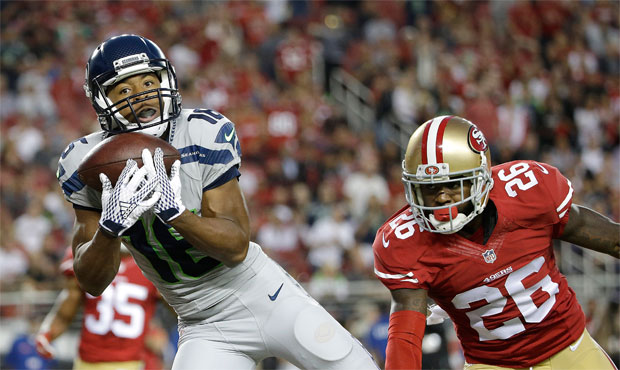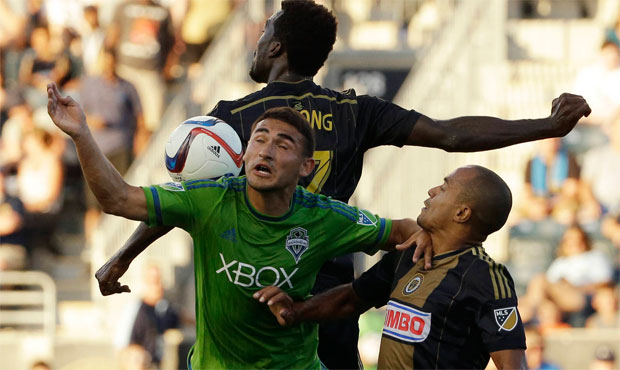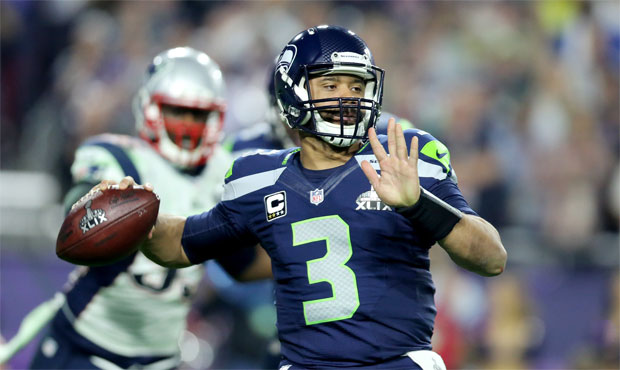Brady Henderson
Seahawks UFA profile: Will J.R. Sweezy be most valuable to Seattle?
 J.R. Sweezy has been Seattle's most reliable offensive lineman since becoming a full-time starter in 2013. (AP)
J.R. Sweezy has been Seattle's most reliable offensive lineman since becoming a full-time starter in 2013. (AP)
At first, Seahawks offensive-line coach Tom Cable had a curiosity about J.R. Sweezy, wondering if he might have the athletic background and aggressive demeanor to make a rare switch from defensive tackle.
Over the next four years, Cable developed an affinity for Sweezy as he became the Seahawks’ starting right guard and their most reliable offensive lineman.
“I don’t like to label guys as the best this or best that,” Cable said last summer during the Seahawks’ town-hall meeting, “but I think he’s one of the very, very, very fine guards in pro football.”
Seahawks UFA profiles: Okung’s complicated situation | Irvin likely to leave
To what degree do Seattle’s front office and those of other potentially-interested teams agree? Those answers will go a long way toward determining what happens with Sweezy in free agency.
As we examine each of the seven Seahawks starters who are set to become unrestricted free agents, here’s a closer look at the situation with Sweezy.
Why he might be back: The Seahawks want him back, for starters. We can safely assume that based on Sweezy’s track record and the situation along their offensive line.
Sweezy has been a good player since becoming a full-time starter in 2013. He plays with the edge and effort that Cable and the Seahawks love, and with all the issues and turnover that Seattle’s offensive line has experienced, Sweezy has been a fixture. He’s missed only two games over the last three seasons.
One of Seattle’s top priorities this offseason will presumably be improving that offensive line, which as a whole was a disaster at times last year. That would be more difficult if Sweezy’s departure created another vacancy to fill.
There’s also the uncertainty over what the market will be like for Sweezy considering his reputation as an offensive lineman who’s better at run-blocking than he is at pass-protecting. That works for the Seahawks, whose offense in each of the last four seasons has ranked in the top three in rushing attempts and among the bottom five in passing attempts. Sweezy might not appeal as much to teams whose offenses are on the other end of the run/pass spectrum.
Why he might not be back: Because the Seahawks have in recent seasons shown a willingness – for better or worse – to go young and cheap along their offensive line. They let Breno Giacomini and then James Carpenter leave in free agency and also traded Max Unger, who may have been released in a salary-cap move had he not been included in the Jimmy Graham deal.
The players who replaced those departed starters – Justin Britt, Garry Gilliam, Patrick Lewis and Drew Nowak – all made less than $600,000 last season.
And if Sweezy’s asking price were to get too expensive for the Seahawks – say, exceeding $5.5 million a season – they have a younger and cheaper albeit mostly unproven alternative in Mark Glowinski, last year’s fourth-round pick. Glowinski played sparingly as a rookie, but the one start he made in place of Sweezy drew rave reviews from Cable and coach Pete Carroll.
Prediction: The degree to which re-signing Sweezy is a priority in the Seahawks’ eyes could depend on what happens with left tackle Russell Okung, who’s headed toward free agency himself amid some complicated circumstances. He’s anything but certain to return. If he doesn’t, the Seahawks seemingly could not afford to lose their two best starters along an offensive line that also needs work elsewhere.
It’s anything but certain, but given the way he has played for the Seahawks, the issues along their offensive line and the question about how robust his market will be, the guess here is that Sweezy will prove to be more valuable to Seattle than any other team.
How valuable? Carpenter’s four-year, $19.1 million deal with the Jets could be in the right ballpark. If a $4.775 million annual average for Sweezy seems excessive, keep in mind that Carpenter got that much despite missing 19 games over his first four seasons while also dealing with weight and conditioning issues. And that was a year ago, when free-agent deals were all relative to a salary cap that was at least $10 million lower than what it’s projected to be in 2016.

























Comments